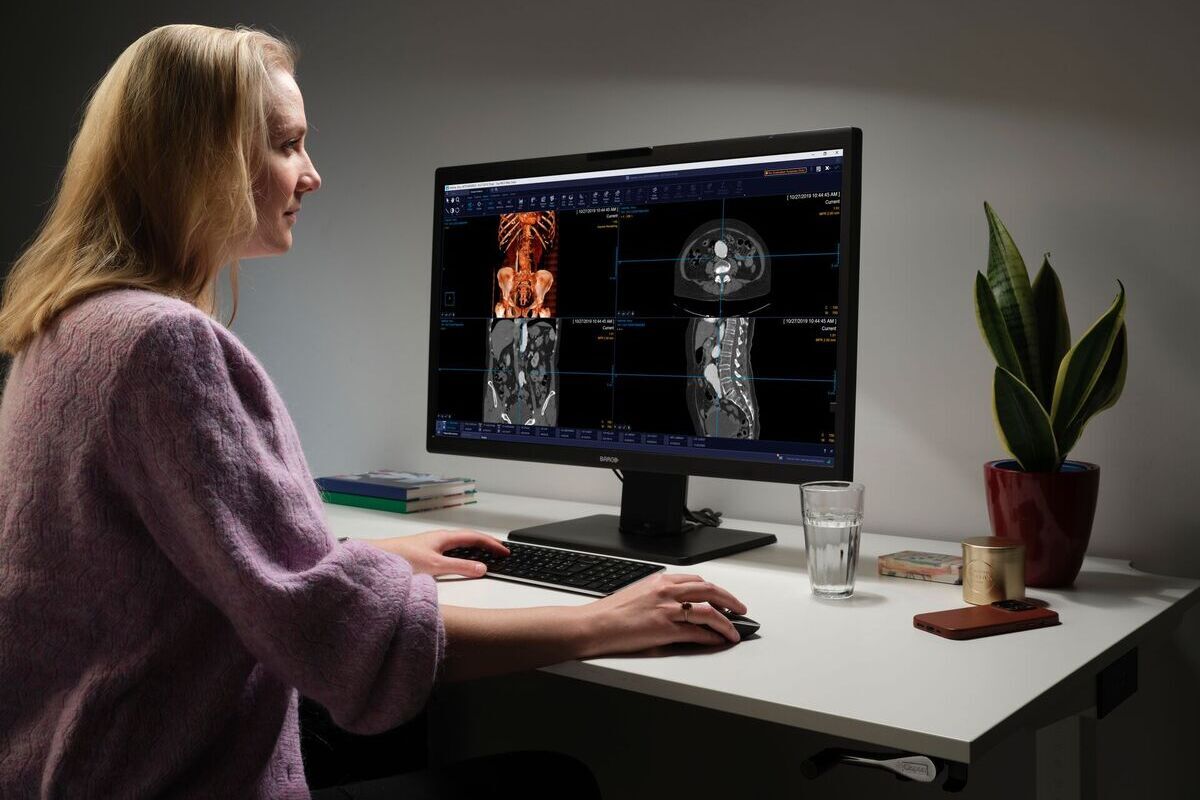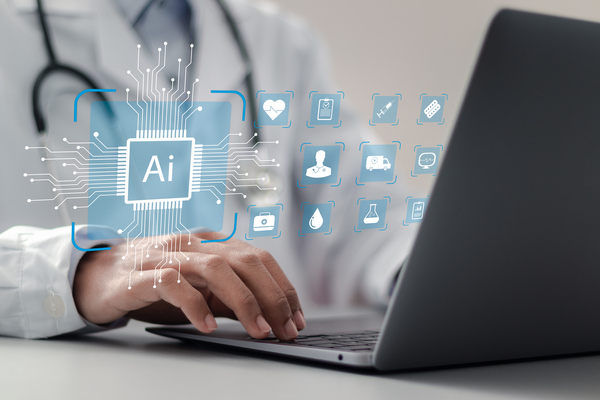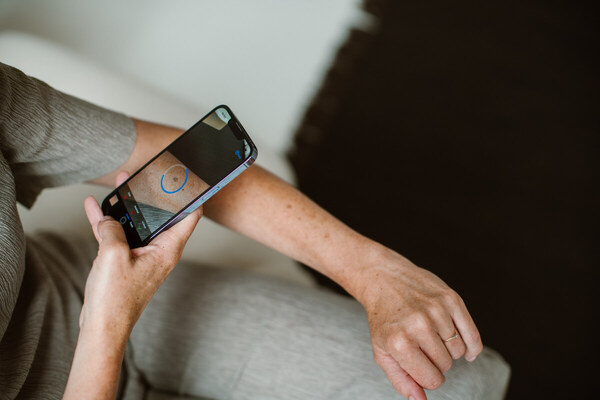Remote radiology: boosting patient care from home

Telework has become part of the daily life of many radiologists worldwide, but it’s not as straightforward as it sounds.
Radiology was an early adopter of digital workflows, transitioning from physical films to digital images as early as the 1980s – a shift that equipped the field well for remote work. The Covid-19 pandemic accelerated this evolution, making teleradiology a permanent fixture in the industry today. But what exactly makes remote work “a thing” in radiology?
Focus and efficiency for better results
Many of the benefits of teleradiology mirror those of remote desk work: reduced commuting time, better focus and increased productivity.
“Following the roll-out of at-home reporting during the pandemic, many consultants on our team noted what they felt was increased focus, reduced distractions and higher productivity when given the opportunity to report from home,” one of our UK customers told us. “This led to us examining the way our teams work and deciding that – even following the return to work as normal – at-home reporting should be incorporated into our long-term approach to work.”
Additional benefits are the possibility to easily contact external specialists for complex cases and more flexibility in on-call shifts. Even hospitals with an in-house team of radiologists can rely on teleradiology services for emergency cases that come in outside regular working hours.
In this way, teleradiology has an impact even on the patient level: they can be helped faster without medical quality getting compromised.
Teleradiology as HR policy
As in many other medical specialist fields, there is a chronic worldwide shortage of radiologists. At the same time, as the population ages there is a bigger demand for medical image analysis. Patient care also becomes more personalised, which results in more images to be analysed per patient. Complex illnesses require more imaging studies as well.
As a result, radiologists worldwide are under the constant strain of an ever-growing workload and burnout is not uncommon. As younger generations enter the workforce, there is a growing group of radiologists that actively protects their work-life balance.
In this climate, offering a teleworking policy is an interesting way for hospitals to attract and keep young talent. Similarly, today many independent teleradiology organisations exist that offer consultancy services – often with no central office, employing radiologists that live all around the world and work from home full-time.
Overcoming technological hurdles
Still, teleradiology isn’t as simple as working from the couch with a laptop. Medical images contain a wealth of information, and viewing them on a low-quality, non-medical screen can lead to misinterpretation or missed details.
Radiologists working from home need medical-grade monitors that comply with diagnostic image-viewing standards and regulations, just like in the hospital. They require secure connections to the medical organisations they work for, ensuring patient data is protected. And they also need a dedicated workspace with controlled lighting conditions to view medical images in full detail.
“It is of utmost importance that the quality of reporting and trust in diagnostics remains uncompromised,” says one of our customers.
From an IT perspective, PACS administrators need to manage, monitor and perform QA checks on diagnostic displays in a remote working environment. A robust display QA solution is essential, one that is scalable, easy to deploy and secure. This solution should be capable of collecting all display telemetry data and automatically conducting necessary QA compliance tests.
Keeping contacts alive
Contrary to the stereotype of the isolated radiologist working in a dark room, radiologists are part of complex networks involving colleagues, general practitioners, other medical specialists, and patients.
Virtual call solutions allow radiologists to stay connected with their network even when working from home. Some radiology monitors come equipped with cameras, speakers and microphones, specifically designed for home use.
The road ahead for teleradiology
About the continued positive impact of their at-home reporting program, one of our customers says, “Not only has our at-home reporting program helped to improve productivity for consultants and reporting radiographers, it has also reduced commuting time, increased capacity and has led to improved job satisfaction, which will in turn help improve staff retention at a time where radiologists are in short supply.”
Remote radiology is here to stay and serves as a model for other medical specialties on how technology can enhance patient care and make the field more attractive to work in. With innovations such as generative AI and 5G connectivity on the horizon, teleradiology will continue to evolve, supporting radiologists so they can focus on what matters most: helping their patients and finding joy in their work.
Are you working in radiology? Don’t miss these 15 home reading tips

Business Reporter Team
You may also like
Most Viewed
Winston House, 3rd Floor, Units 306-309, 2-4 Dollis Park, London, N3 1HF
23-29 Hendon Lane, London, N3 1RT
020 8349 4363
© 2025, Lyonsdown Limited. Business Reporter® is a registered trademark of Lyonsdown Ltd. VAT registration number: 830519543



